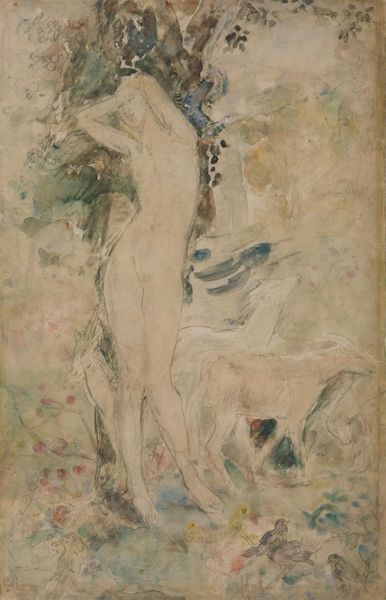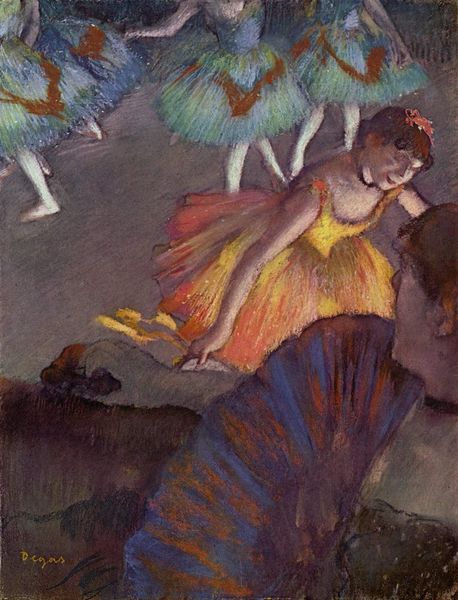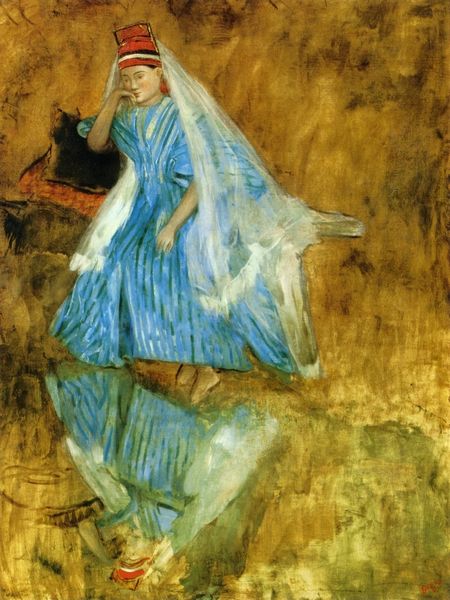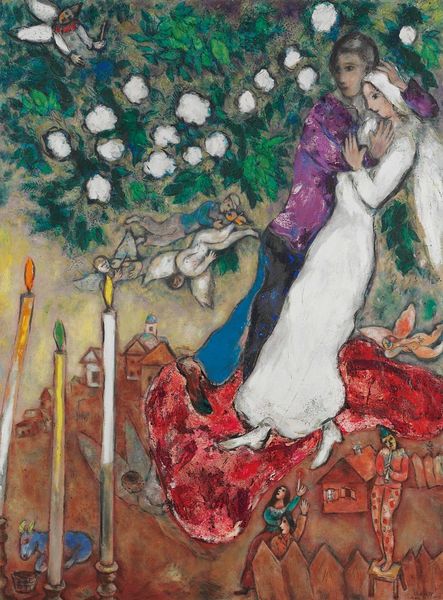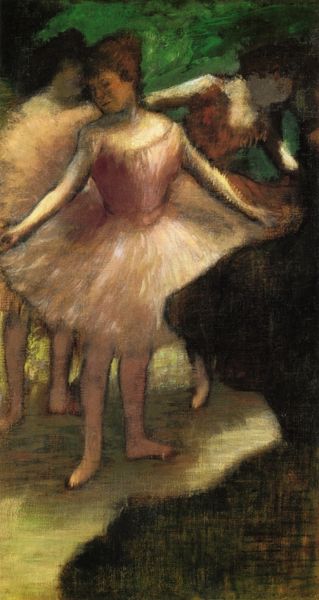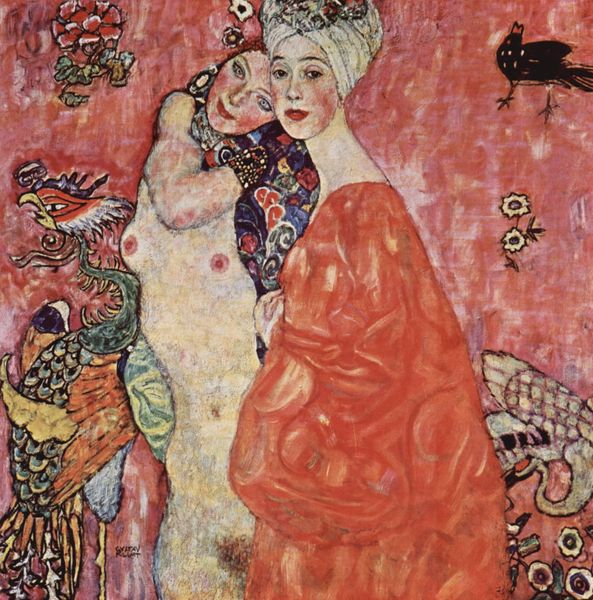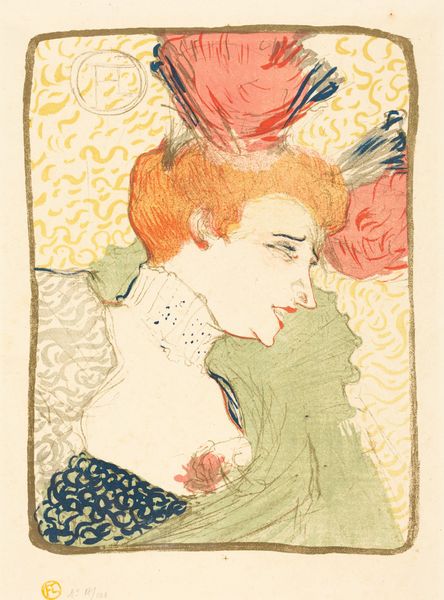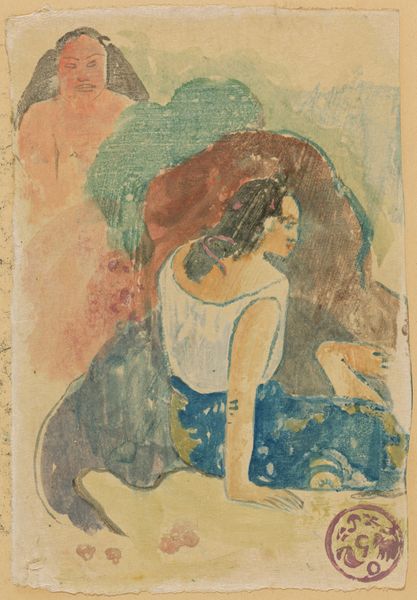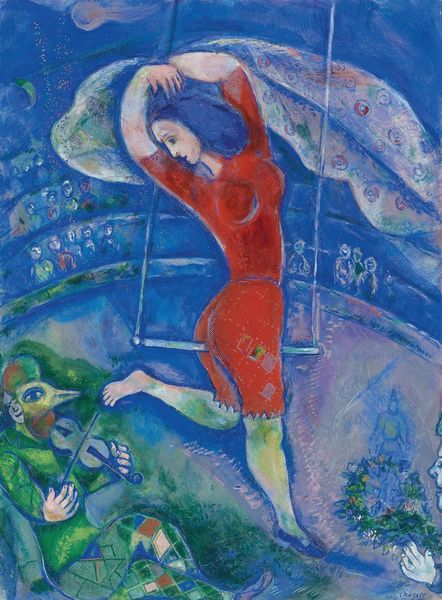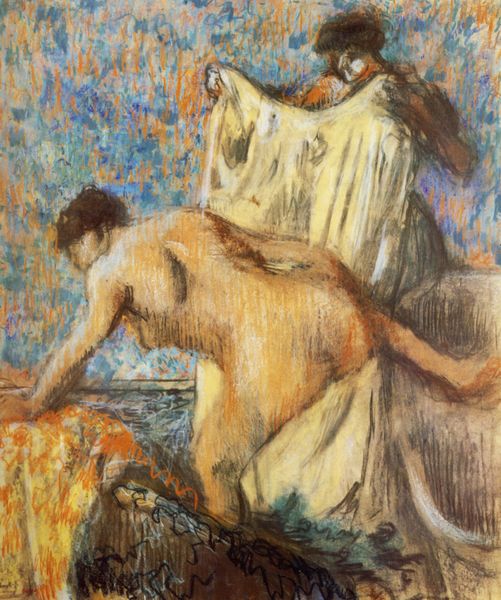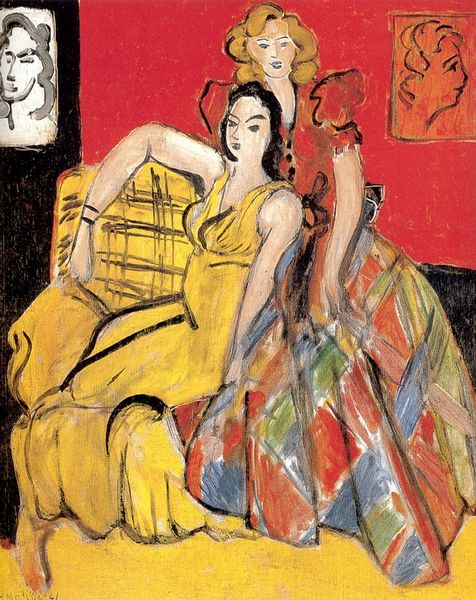
Copyright: Modern Artists: Artvee
Curator: Marc Chagall created this work, "L’Écuyère; étude," in 1931, using watercolor and colored pencil. It's got that instantly recognizable dreamlike quality of his. What’s your initial reaction? Editor: Chaotic and passionate. The horse is awkwardly positioned in the frame, which immediately unsettles any classical harmony you might expect from an equestrian piece. But, there is energy there, too. Curator: Let's consider the making. The way Chagall layers watercolor, almost dissolving forms, really pushes the boundary between figuration and abstraction. You see it most clearly in the woman's red dress – almost pure texture, yet resolutely a dress. Editor: That texture reads as more than just fabric, though. Red historically has been a color signifying danger, eroticism, and rebellion. Placed in a village where clear social and cultural expectations existed, it seems the wearer is challenging these rigid constructs. Curator: Interesting. And what of the medium? Watercolor, often associated with spontaneity and quick studies, challenges the notion of the finished "masterpiece," drawing attention to the process itself. It shows its workings. Editor: Yes, a medium linked closely to gender, too. I wonder, how did Chagall intend the social class dynamics to affect that, depicting figures almost floating above the common person with the woman dominating the pictorial space? Is he addressing power and status here? Curator: Certainly, and considering that, even on a horse she still appears unbalanced and like she needs her lover to hold onto her, the theme becomes far more ambiguous and complex, showing dependence not independence. It's also interesting, though, how he's incorporated colored pencil. See the tiny hatching strokes that give volume to the horse? It’s like he's trying to both solidify the form, and let it dissolve simultaneously. Editor: This ambivalence also complicates a reading that only critiques patriarchy or dominant narratives. It humanizes and perhaps subverts an all-too-simple judgement about power relations. The fact that we don't have a fixed focal point further disrupts expectations, mirroring society itself and showing its messiness and confusion. Curator: Exactly! Seeing how Chagall wrestles with materials helps us realize the intellectual and even physical labor of bringing something like this into existence, beyond just inspiration. Editor: Looking at "L’Écuyère; étude" through this lens makes it not only about an artist, but a conversation on the structures within which he lived. There are messages in plain sight to everyone but especially scholars from a social context!
Comments
No comments
Be the first to comment and join the conversation on the ultimate creative platform.

